It was three days after Christmas in 1975 when the turnstiles at Flower Lodge clicked to the sounds of 12,500 people walking through them.
The turnstile staff at the home of Cork Hibernians were rarely this busy on any occasion and certainly not for a match that didn’t even involve the ground’s tenants.
It had been another dark year in Ireland with the death toll from the ongoing Troubles reaching 258 – the fourth highest toll of any year during the conflict – and set to rise once again in 1976.
Attendances at League of Ireland matches were reaching a worrying low for many teams with Peter Byrne writing in The Irish Times that a clash between Shamrock Rovers and Home Farm at Milltown had brought in just £55 in gate receipts – less than half of the revenue once generated by Rovers' reserve games, according to the report.
The domestic game was at a low ebb and, on the international front, it would still be another 13 years before Ireland qualified for a major tournament for the first time.
And yet on that cold Sunday, as the festive season came to a close, the fans came in their droves to the old ground on the Boreenmanna Road in Ballintemple for a glimpse. A glimpse of a man who had been a central figure on that night in Wembley less than eight years earlier in 1968 when Matt Busby’s Manchester United odyssey came full circle and the club, which had been destroyed by the Munich air disaster 10 years before, won the European Cup.
On that night he was a 22-year-old with dancing feet who played with all the confidence of a man who had just completed a season as the top goalscorer in England.
In the second minute of extra-time he rounded goalkeeper José Henrique to slot home and put United 2-1 up, sending a dagger through the heart of their Portuguese opponents and, in doing so, cap off a stellar year which saw him become the only man from the island of Ireland ever to win the Ballon d’Or.
Seven and a half years later, in the mud of Flower Lodge, George Best was a shadow of the player he had once been.
With his superstar lifestyle spiralling out of control and after leaving United for good in 1974, Best pitched up in Ireland on a pay-for-play basis with Cork Celtic, in between a short stint with then Fourth Division side, Stockport County. He was still just 29.
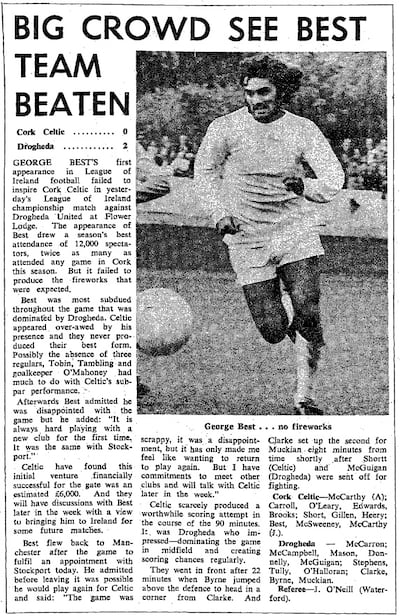
Quite how one of the greatest footballers the game has ever seen came to line out against Drogheda United on a December Sunday is a question perhaps best answered by the man who brought him over.
That man was Chelsea legend – and record goalscorer at the club until Frank Lampard passed him in 2013 – Bobby Tambling. Tambling was player-manager of the Cork side and he set about using his contacts in England to secure the signing of someone who would draw in the crowds.
“Our chairman wanted to bring in someone to swell the crowds so who better to bring in than George Best?” Tambling recalls.
“I knew him from playing against him, I didn’t know him well but he always seemed like a nice guy. A friend of mine got in touch with him and set it up. So I flew over and we met up and had a good talk and he seemed keen to get back and have a game, I didn’t really have to do much talking. He was going through his fight to get over the problem he had but he just wanted to play.”
With that, terms were agreed and Best became a Cork Celtic player. He picked up healthy cheques for, according to newspaper reports, £600 per game – at a time when the average industrial wage for a man was £53 a week and £27 for a woman – but crowds were left somewhat underwhelmed by a player who The Irish Times described as "uncommonly well fleshed around the hips".
A 2-0 defeat to Drogheda in that first game at Flower Lodge left Celtic in sixth place but the increased crowd did earn the club enough money to tide them over until the end of the season.
Or at least they thought so but the process of counting the cash was, in what is admittedly typical League of Ireland style, not exactly meticulous, as secretary Donie Forde explained to reporters afterwards.
“We don’t really know how much we took on the gate,” he said. “We simply pushed the money away into the safety of a van before anyone had any ideas of getting their hands on it. But I believe it was a figure of between £5,000 and £6,000.
“But we played a load of rubbish. I believe our players were simply overawed by the occasion,” Forde finished.
Given that only a handful of the Celtic players were on professional contracts and, even at that, earning small wages, the arrival of a superstar on three figures per game – or, as one newspaper dubbed Best: “the £6 a minute soccer star” – was sure to bring some unrest into the dressing room.
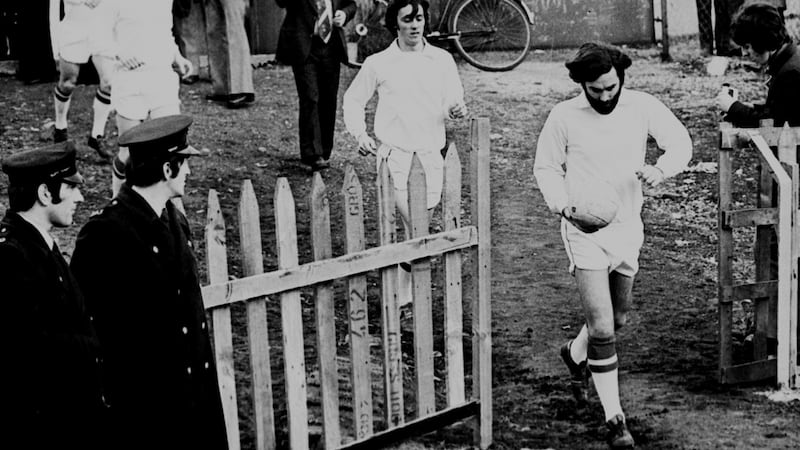
“I think that was what worried us mainly – if our squad would be nervous about playing with someone who was such a big name and such a great player,” Tambling says.
“Before he came over they were asking ‘what’s he like? What will he be like?’ and I just said ‘Listen, he’s one of us now. He’s an unbelievable talent but he strikes you as just being a normal guy who will fit in with the squad’.
“They were a bit nervous I think for the first game and meeting up with him but he came in and he was just as normal as though he’d been playing there for four or five years. The lads took to him immediately, he spoke to them and joked with them and that’s all you can ask from someone coming to a small club like we were from the big time.”
The idea of bringing big-name players over from England was one that took a particularly strong hold in the League of Ireland around 1975 and 1976 with the likes of Best, former Manchester City and QPR forward Rodney Marsh, England’s 1966 World Cup final hat-trick hero Geoff Hurst and even Bobby Charlton coming over to play.
Indeed, The Irish Times reported that, at one stage, there were over "two dozen" of "yesterday's father figures from the soccer scrapheap" who made their way across the Irish Sea.
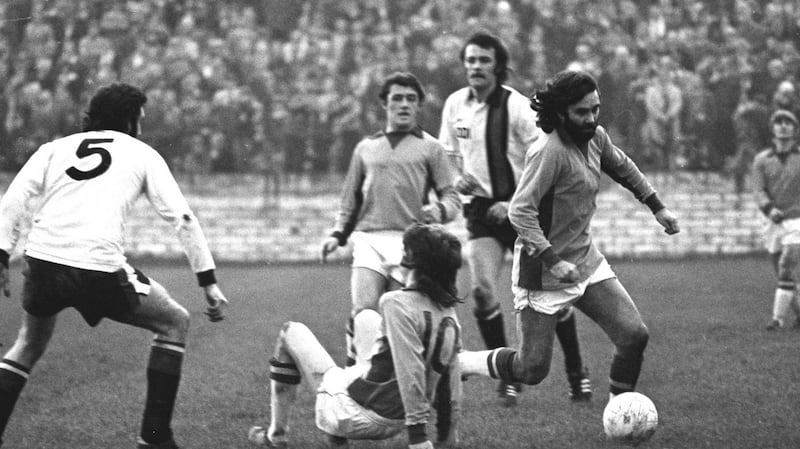
But Best was not from the scrapheap. He was, to many, the best player in the world at one time and someone who Cork Celtic thought could not only improve attendances but also move them up from the mid-table spot which they occupied.
Another big crowd turned out at Turner’s Cross for Best’s second game in a Celtic shirt which resulted in a 1-0 win for his side over Bohemians but, again, the former Man United star failed to impress.
"Generally he was no more than an agitated onlooker," reads Peter Byrne's report in The Irish Times. "Gone was the flair and willingness to run at defenders and, on this performance, the way back to the Olympian heights of the sixties is now vertical."
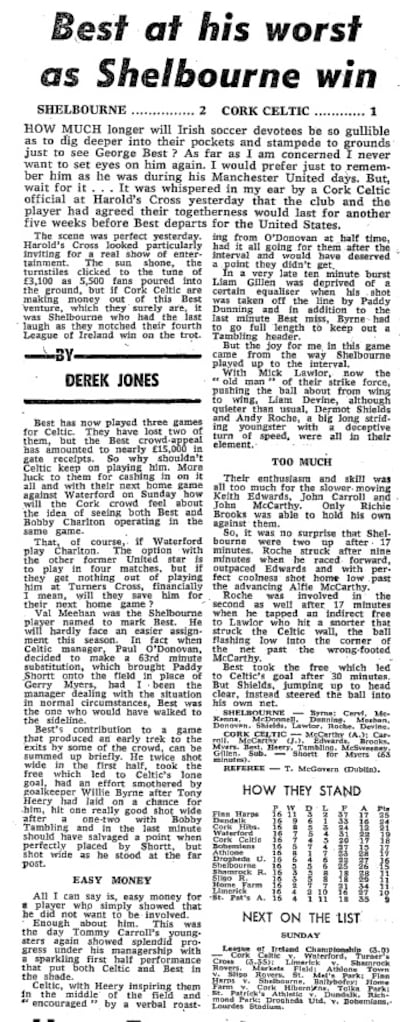
On top of that the FAI were investigating Celtic for their failure to register Best before playing him against Drogheda and the whole experiment was beginning to look doomed. But Best was to give it one more shot and this time it would be in Dublin.
With City’s next match away to Shelbourne in Harold’s Cross, the Dublin club offered to pay Best’s playing fee and his fare to come over in the hope that a big crowd would turn out to watch him play in the capital.
A 2-1 win for Shels in front of a crowd of 5,500 – more than five times the club's average gate at the time – was a success for the Dublin club. But it was also the stage for another disappointing performance from Best and one which seemed to turn the tide against the whole idea of availing of his services. Writing in The Irish Times, Derek Jones was particularly damning in his assessment.
“How much longer will Irish soccer devotees be so gullible as to dig deeper into their pockets and stampede to grounds just to see George Best?” he wrote.
“As far as I am concerned I never want to set eyes on him again. I would prefer just to remember him as he was during his Manchester United days.”
The defeat would be Best’s last game in the League of Ireland and the potential match-up against former United teammate Bobby Charlton – who at the time was playing for Waterford – was never to materialise.
Cork Celtic were fined £50 for failing to register Best on time and the player himself went stateside to Los Angeles Aztecs before returning for a fruitful spell with Fulham, after which his globetrotting odyssey would take him back to the US with stops in Hong Kong and Australia among other countries along the way . Just three years after his time in Ireland, Cork Celtic went out of existence.
It was just one short spell in a career and a life which has spawned countless books and films and conjures up both sadness and joy in equal measure.
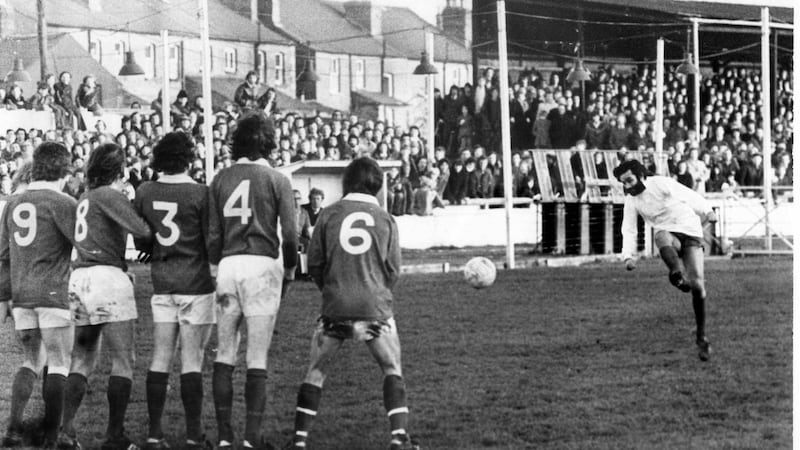
“But the marvellous thing about it when you think back on it now,” Tambling says, “is that thousands of people in Ireland can turn and say to their mates or whoever: ‘I saw George Best play’. He obviously wasn’t at his full fitness or the fitness he’d like to be at but just to see him on the field and see what he could do was marvellous and we thoroughly enjoyed his company.”
This is part of a series called From The Back Pages, examining stories and events that have made the sports pages of The Irish Times since 1859. If you have suggestions for stories you would like to see featured email rcroke@irishtimes.com or get in touch on Twitter @Ruaidhri_Croke. For more information on subscribing to the archive, see www.irishtimes.com/archive.











